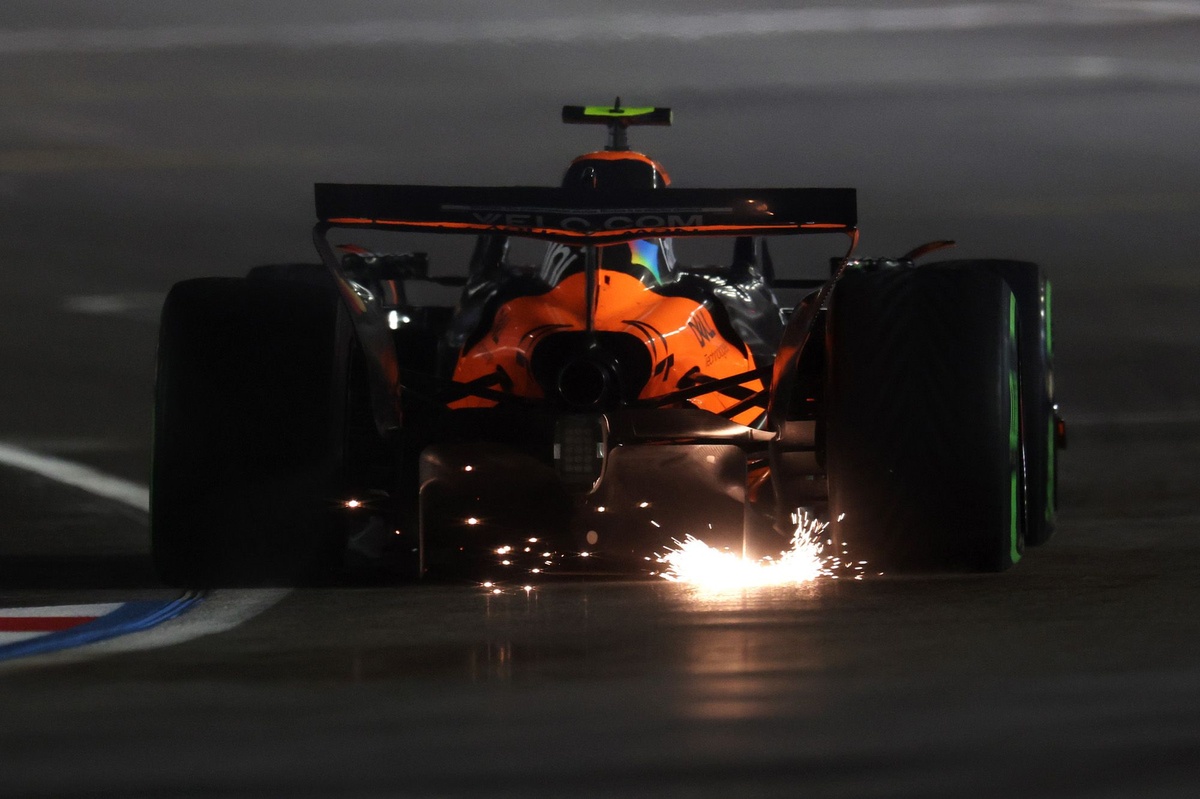
McLaren Formula 1 team principal Andrea Stella has provided answers to the main questions following its double disqualification last weekend, after the Woking team completed its internal investigation.
Both McLaren drivers were removed from the final classification of the Las Vegas Grand Prix following post-race technical checks, resulting in Lando Norris losing his second-place finish and Oscar Piastri his fourth place. The decision to disqualify Norris and Piastri due to excessive skid plate wear allowed Red Bull's Max Verstappen to close in on both in the drivers’ championship.
Verstappen is now level on points with Piastri and only 24 points behind Norris with two rounds to go.
During the race, both McLaren drivers were instructed to adjust their driving – although it wasn’t clear whether this related to potential fuel saving or an attempt to prevent excessive skid plate wear. In an interview provided by the team’s press department ahead of the Qatar Grand Prix, Andrea Stella revealed that the team quickly realised there could be an issue.
“From the early laps of the race, it was clear from the data that the level of unexpected porpoising would be a concern,” he is quoted as saying. “We were able to monitor the situation better on Lando’s car using telemetry data, but it was made more difficult on Oscar’s car, after we lost one of the sensors we use to establish the level of grounding.
“We realised relatively soon that this level of porpoising was causing a high level of skid wear energy and this is the reason why both drivers started to take remedial actions in various parts of the circuit. Unfortunately, we also saw that, because of the car operating window and the circuit characteristics, most of these actions were not effective enough in reducing porpoising.”

The team faced a difficult build-up to the race, with FP1 interrupted twice by red flags and Friday practice held in damp conditions. But Stella denied that McLaren took a risky approach in choosing its set-up, insisting it took a “safety margin” in selecting the ride height.
“The specific cause that led to the situation was the unexpected occurrence of extensive porpoising, inducing large vertical oscillations of the car,” said the Italian. “The level of porpoising was exacerbated by the conditions in which the car operated during the race, and it was not anticipated based on what we had seen in practice and based on the predictions of the car operating window in the race.
“Based on the data we had acquired in practice, we do not believe we took excessive risks in terms of ride height and we also added a safety margin for qualifying and the race, compared to practice, in terms of clearance to the ground. However, the safety margin was negated by the unexpected onset of the large vertical oscillations, which caused the car to touch the ground.
“The porpoising condition that the car developed in the race was also a difficult one to mitigate, as even a reduction in speed – an action that, in theory, should increase clearance to the ground – was only effective in some parts of the track but in others was actually counterproductive.”
While McLaren accepted the penalty, Stella noted that the breach was marginal – and indicated that the FIA also accepted the team did not intend to deliberately break the rules. He also suggested the regulator may want to review potential penalties in such cases, when breaches are minimal, in the future, as current rules do not leave the stewards any margin when issuing sanctions, and disqualification was the only possible outcome following the technical inspection of the McLaren cars.
“We verified together with the technical delegate, that the measurement of the skid thickness was correct,” he said. “Even if the excessive wear is relatively minor and in only one location, [as it was 0.12 mm for Lando and 0.26mm for Oscar], the regulation is very clear that the rear skids need to be at least 9mm at the end of the race in every location.

“Unlike sporting or financial rules – there is no proportionality in the application of penalties for technical regulation infringements. The FIA itself has admitted that this lack of proportionality should be addressed in the future to ensure that minor and accidental technical infringements, with minimal or no performance benefits, do not lead to disproportionate consequences.
“It should also be remembered that the FIA itself emphasised that the infringement was not intentional, there was no deliberate attempt to circumvent the regulations, and there were also mitigating circumstances, as we explained to the event Stewards.”
McLaren remains confident that such an issue won’t be repeated in the final two races.
“The conditions we experienced last weekend and which led to the onset of porpoising and excess of grounding, compared to what was expected, are very specific to the operating window of the car in Vegas and the circuit characteristics. We have a well-established and consolidated way of setting up the car and we are confident that this will lead us to an optimal plan for the coming races, starting from the Lusail International Circuit.
“Nevertheless, we learn from every lesson and the one in Las Vegas has been able to provide some useful information about the operating window of the car and the porpoising regime.”








Read and post comments